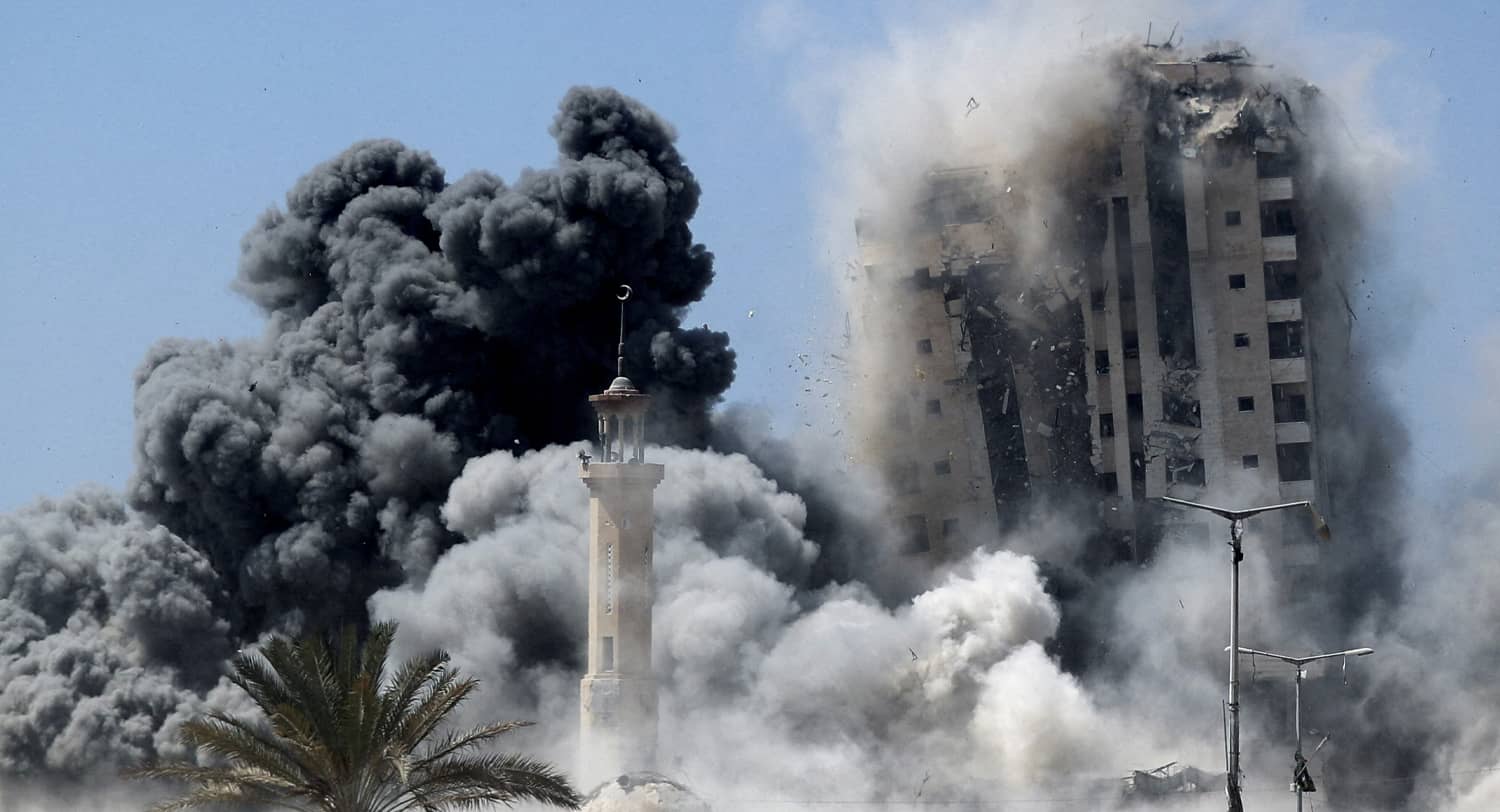Gaza City, one of the last two Hamas strongholds, is the target of the Israel Defense Forces (IDF) in an ongoing operation. It is a large metropolitan area stretching from Shati, the historic refugee camp on the beach, through the wealthy neighborhood of Rimal, around to Zeitoun and the old quarter of historic Gaza. In addition, the neighborhoods of Shuja’iyya and Jabalia radiate out to the east and Sheikh Radwan to the north.
This large urban area is now mostly empty of its civilian population. Around 700,000 people have fled to the south part of the Gaza Strip since Israel approved the operation in August. In mid-September, the IDF launched a wave of airstrikes targeting high-rise buildings in Gaza City. While Defense Minister Yisrael Katz boasted that the battle would change the skyline of the city, the IDF said more accurately that the objective was to neutralize sites which Hamas had used for observation and for terrorist purposes.
When the IDF initially invaded Gaza, in response to the terrorist attacks of October 7, 2023, it assessed that Hamas had 24 battalions, of which around half were in northern Gaza. The IDF also assessed that by late November 2023 the Hamas battalions in northern Gaza were largely broken and dismantled. By January 2024, the IDF believed Hamas had been destroyed in northern Gaza. This was an illusion bred of underestimating Hamas and inflating success, a problem that has plagued IDF assessments of Hamas for two decades.
Now, in September 2025, 23 months later, the IDF has to re-conquer Gaza City, with three divisions. In addition to the 36th and 162nd Divisions, which include armored units and the Golani infantry brigade, the IDF has the 98th Division that includes commandos and paratroops. The 98th has also been provided with armor from the 7th Armored Brigade during the course of the war so its elite infantry units can fight with tanks. This gave the 98th the muscle to take Khan Younis in the first months of 2024 and also enabled it to fight in several neighborhoods in northern Gaza. The IDF called up around 60,000 reservists for the battle.

The ground attack has been slow, in order to enable civilians in and around Gaza City to evacuate. Now with tall buildings destroyed, the IDF is inching forward street-by-street, neighborhood-by-neighborhood. This is the way the IDF fights today, discarding its Momentum Plan of 2020. That plan called for Israel to return to “short wars, decisive victory, and removal of the main military threat to Israel.” But this 23-month war has not been either short or decisive.
The IDF has had to retake a bunch of ground in northern Gaza to get to the gates of Gaza City, completed in Operation “Gideon’s Chariots” that began in May 2025. But Israeli divisions have repeatedly conquered areas and then mostly given them back.
Gaza City is a key example. It was surrounded and parts of its outlying neighborhoods were captured in October and November 2023. In October and November 2024, the IDF once again went into northern Gaza and largely destroyed Beit Lahiya and Jabaliya. However, Hamas continued to recruit. For instance, Beit Hanoun, a town in northern Gaza, had to be completely destroyed during Gideon’s Chariots in summer 2025. The IDF has retaken Zeitoun for the sixth time.
The weapons the IDF is finding are mostly old or in bad condition, according to some recent photos. It doesn’t appear Hamas has much of its armory left. Nevertheless, the terrorist group continues to inflict casualties. On September 25, the IDF named Staff Sgt. Chalachew Shimon Demalash, an Ethiopian Jew from Beersheva, as the latest casualty.
The other remaining Hamas stronghold is the Central Camps. This is the name for the city of Deir al-Balah and three adjacent refugee camps that have evolved into built-up urban areas over the years. This area has largely been spared heavy fighting and now some two million Gazans reside in either the Central Camps or Mawasi, with the latter designated initially as a safe zone in Gaza, though Hamas fighters have established there and attracted IDF attention. Hamas may continue to rebuild some capabilities by controlling the civilians in these two areas.
Hamas is weakened but still seeks to control the 2.1 million people in Gaza. Meanwhile, IDF reservists, the bulk of the forces, have done an unprecedented amount of duty; reports over the last six months portray units as fatigued with fewer people showing up for reserve unit call-ups. Still, the great majority of reservists continue to serve when needed.
With Hamas refusing to surrender, an open question is whether its remaining units can simply melt away from Gaza City and re-emerge in the Central Camps, to fight another day. If so, then the Gaza City operation now underway will not lead to PM Netanyahu’s goal of total victory over Hamas.

